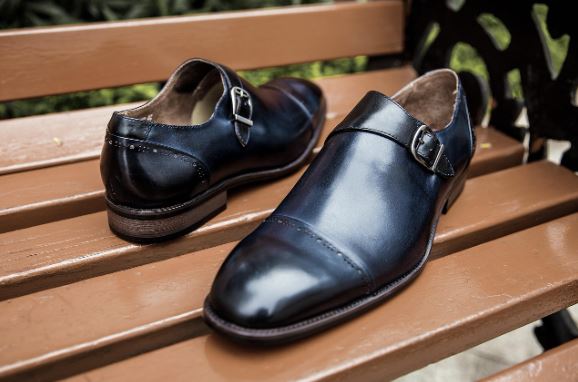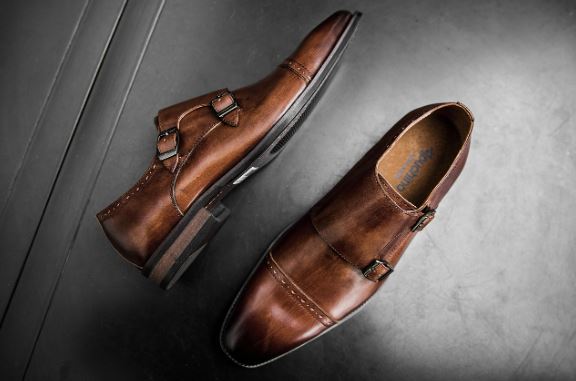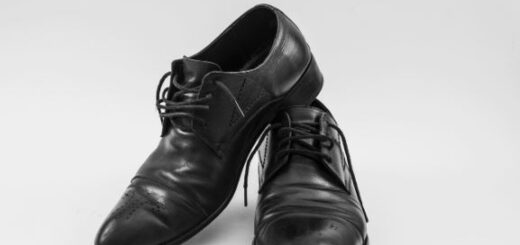The Reality Behind Design Copying in the Classic Shoe Industry
In the world of traditional shoes, most manufacturers offer their takes on iconic styles like the plain cap toe oxford, semi brogues, and adelaides. However, when someone introduces a slightly different model, it often doesn’t take long before many others release their own versions of that design. This phenomenon is deeply rooted in how the shoe industry works, and this article explores the reasons behind it.
How Designs Spread Across Brands
Those of us who keep a close eye on the classic shoe scene notice a recurring pattern. A bespoke shoemaker or a ready-to-wear (RTW) brand unveils a new model that feels fresh and distinct. Before long, another maker introduces something very similar, and within a year or two, many companies, both bespoke and RTW, are offering nearly identical versions.
It’s also common for customers to bring pictures of shoes they like to their bespoke makers or companies offering made-to-order (MTO) services, asking for replicas without encountering legal problems. The free sharing of ideas in the shoe world might seem puzzling at first, but there are well-established reasons for this open environment.

A Case Study: The Evolution of a Popular Design
One good example comes from a model initially created by Antonio Meccariello for Kiton when he helped develop their footwear division. This punched wholecut shoe became a recognizable design for Kiton and later appeared under Meccariello’s own label.
When I worked with the brand Italigente, I participated in developing a version of this model as well. Kiton still features iterations of the original design, offering it in a range of different leathers, demonstrating how certain shoes maintain long-term popularity.
The widespread adoption of this style isn’t about one company stealing from another; rather, it reflects broader practices rooted in how footwear design is treated legally and culturally.
Read Also: When to Repair or Replace Your Shoes: Expert Advice on Common Damage
Why Copying is Common and Accepted
At first glance, it might seem questionable that shoe companies can freely reproduce each other’s designs. Understanding the legal framework helps explain why this is generally acceptable.
Shoes and clothing are considered primarily functional items. Unlike a logo or a painting, which can be easily protected under copyright laws, utilitarian products usually don’t qualify for such protections. Copyright applies only to works that are completely original and non-functional in nature. Since most shoes are simply variations of a basic functional object — a foot covering secured by laces, buckles, or elastic — they don’t meet the criteria for copyright protection.
The Role of Design and Pattern Protection
While copyright doesn’t apply, there is another layer of protection available: design or pattern protection. These protections do not require a work to be completely unique, but they do require the design to be new and distinguishable from previous works.
However, there are hurdles. First, the creator must formally apply for design protection, which can be costly and complicated, particularly when seeking protection across multiple jurisdictions like the European Union or the United States. Even if granted, design protection is temporary and must be renewed periodically, often losing protection after a few years.
Moreover, enforcement is tricky. Minor alterations to a design can allow competitors to create nearly identical products without technically infringing on the original. Add to that the differences in international laws, and it becomes clear why few shoe manufacturers bother to pursue formal design protection for new models.
In short, because it’s difficult, expensive, and ultimately ineffective, most new shoe designs are left unprotected, allowing anyone to imitate them freely.

Inspirations Often Come from the Past
Another important point to consider is that many “new” designs are themselves adaptations of styles from decades, if not centuries, ago. Classic footwear evolves slowly, and often what seems like an original idea is actually a reinterpretation of an old one.
Thus, it becomes difficult, if not impossible, to determine who first created a particular design. In many cases, shoemakers are building on a long tradition, tweaking existing ideas rather than inventing entirely new ones.
Attempts to Strengthen Fashion Design Protections
There have been efforts, particularly in the United States, to extend stronger protections to fashion designs, including footwear. Some legislation has been proposed to make it easier for brands to prevent copies of their designs, largely motivated by large fashion houses wanting to guard their creations.
However, these proposals have faced significant opposition, with critics arguing they would create more legal confusion and stifle creative development. As a result, such initiatives have never gained enough traction to become law, and the classic shoe industry continues to operate in a largely open environment where borrowing ideas is the norm.
The Positive Side of Design Sharing
While some might view this free-for-all as a negative, it also has positive aspects. Imagine a world where only one company could make double monk straps or tassel loafers because they had exclusive rights to the design. The variety and creativity we see today would be severely limited.
By allowing inspiration and adaptation, the shoe industry encourages innovation while preserving classic styles for everyone to enjoy. Consumers benefit from a wider selection, and brands can explore improvements or variations without fear of lawsuits over minor similarities.
Was Meccariello’s Design Truly Original?
It’s tempting to think of Antonio Meccariello’s punched wholecut as a groundbreaking innovation. However, when we look back further, we find strikingly similar designs from previous decades.
Romano Martegani, a well-known Italian shoe manufacturer, produced very similar shoes in the 1980s. Their designs, preserved in archival photographs, show a close resemblance to Meccariello’s work, including similar medallion patterns.
It’s likely that Meccariello, consciously or unconsciously, was influenced by earlier designs, just as many others are influenced by the rich history of shoemaking. Likewise, Martegani may have drawn inspiration from even older models that are lost to history.
Influence Rather Than Imitation
Rather than thinking of this process as direct copying, it’s more accurate to see it as a continuous flow of influence and reinterpretation. Shoemakers observe, adapt, and evolve existing designs, refining them for contemporary tastes while respecting tradition.
In many cases, this results in better shoes. Small changes made by different brands in response to fit, aesthetic preferences, or technological advancements mean that customers enjoy products that honor classic designs while also meeting modern standards.
The Cycle Will Continue
As long as shoes are seen primarily as functional objects, and as long as legal protections remain limited and difficult to enforce, we can expect the cycle of inspiration and imitation to continue.
New designs will emerge, brands will adopt and adapt them, and customers will benefit from the resulting diversity and refinement. In truth, this tradition of borrowing and enhancing designs is one of the reasons why the classic shoe world remains vibrant and dynamic rather than stagnant.
Conclusion: A Tradition of Shared Excellence
Ultimately, the sharing and adaptation of designs within the classic shoe industry is less about theft and more about tradition. Shoemakers draw from a shared heritage, continuously building on what came before to create shoes that honor history while embracing modern craftsmanship.
Without this culture of open inspiration, the rich variety we enjoy today would not exist. Far from diminishing creativity, this practice ensures that the art of shoemaking remains alive, evolving, and accessible to a wider audience.
Frequently Asked Questions
Why do multiple shoe brands release similar designs?
Because footwear designs are generally unprotected, brands freely adapt successful styles.

Are new shoe designs protected by copyright?
No, shoes are seen as functional items and usually cannot receive copyright protection.
What is design or pattern protection in the shoe industry?
It allows for the temporary protection of unique designs but requires a costly and complex application.
Why don’t more shoemakers pursue design protection?
Because it is expensive, complicated, hard to enforce internationally, and often not worth the effort.
How do small design changes affect protection rights?
Minor alterations can legally bypass design protections, allowing very similar shoes to be produced.
Is copying in the shoe industry viewed negatively?
Not typically; it is seen as part of a tradition of adapting and evolving styles.
How does historical inspiration influence modern designs?
Many “new” designs are adaptations of classic models from decades or centuries ago.
Was Antonio Meccariello’s design entirely original?
No, similar designs existed earlier, such as those by Romano Martegani in the 1980s.
Could future laws strengthen design protections?
Attempts have been made, but they are unlikely to pass due to practical challenges and opposition.
How does copying benefit consumers?
It offers greater variety, accessibility, and innovation in classic footwear choices.
Would the shoe industry suffer without design sharing?
Yes, it would limit creativity, reduce options, and slow the evolution of classic shoe styles.
How should the tradition of copying be understood?
It should be seen as a positive, collaborative process that keeps classic shoemaking vibrant.
Did You Know?
- Did You Know that classic shoe designs often can’t be copyrighted because they are considered functional rather than artistic?
- Did You Know that even if a shoe design is protected, slight modifications can legally allow others to recreate similar styles?
- Did You Know that many modern “new” shoe designs are actually revivals or reinterpretations of models created decades ago?







